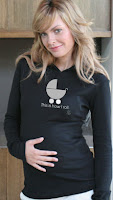 october is SIDS awareness month, a time to educate parents, care givers and family members about the risk factors associated with Sudden Infant Death Syndrome.
october is SIDS awareness month, a time to educate parents, care givers and family members about the risk factors associated with Sudden Infant Death Syndrome.
the american academy of pediatrics recommends the following important guidelines to help reduce the risk of SIDS (NOTE- always consult your own pediatrician for his/her recommendations.):-
Place your baby in a safety-approved crib with a firm mattress and a fitted sheet.
-
Never put your baby to sleep on a chair, sofa, water bed, cushion, or sheepskin.
-
The safest place for your baby to sleep is in the room where you sleep, but not in your bed.
-
Place your baby's crib or bassinet near your bed (within an arm's reach) to make breastfeeding easier and help you watch over your baby.
-
If bumper pads are used, they should be thin, firm, well secured, and not "pillow-like."
-
Blankets, if used, should be tucked in around the crib mattress. They should not reach any higher than your baby's chest. Try using sleep sacks or sleep clothing instead of a blanket to avoid the risk of overheating.
-
Keep pillows, quilts, comforters, sheepskins, and stuffed toys out of your baby's crib. They can cover your infant's face—even if she is lying on her back.
Other ways to reduce the risk
-
Do not let your baby get too warm during sleep. Use light sleep clothing. Keep the room at a temperature that feels comfortable for an adult.
-
Do not smoke during pregnancy. Also, do not allow smoking around your baby. Infants have a higher risk of SIDS if they are exposed to secondhand smoke. One of the most important things parents and caregivers who smoke can do for their own health and the health of their children is to stop smoking.
-
Pacifiers may help reduce the risk of SIDS. However, if your baby doesn't want it or if it falls out of his mouth, don't force it. If you are breastfeeding, wait until your baby is 1 month old before using a pacifier.
-
Avoid products that claim to prevent SIDS. Most have not been tested for safety. None have been shown to reduce the risk of SIDS.
-
Home monitors should also be avoided. While they can be helpful for babies with breathing or heart problems, they have not been found to reduce the risk of SIDS.
-
Give your baby plenty of "tummy time" when he is awake. This will help strengthen neck muscles and avoid flat spots on his head.
-
Share this information with anyone who cares for your baby, including babysitters, grandparents, and other caregivers.







